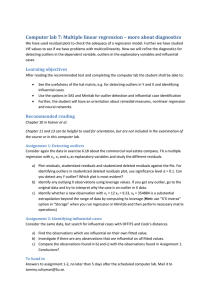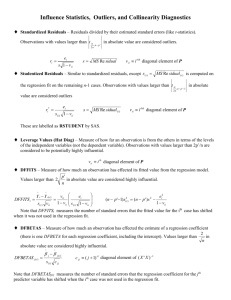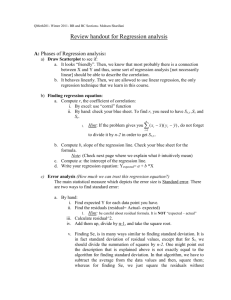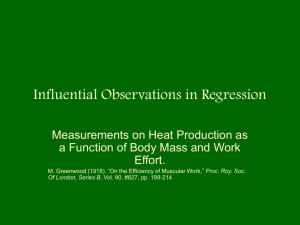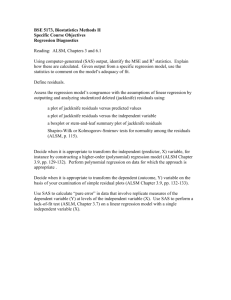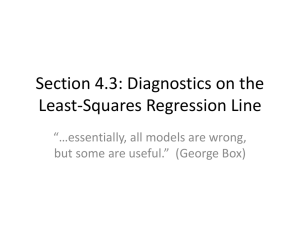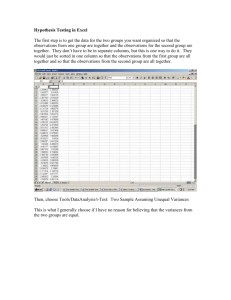Influence Statistics and Outliers
advertisement
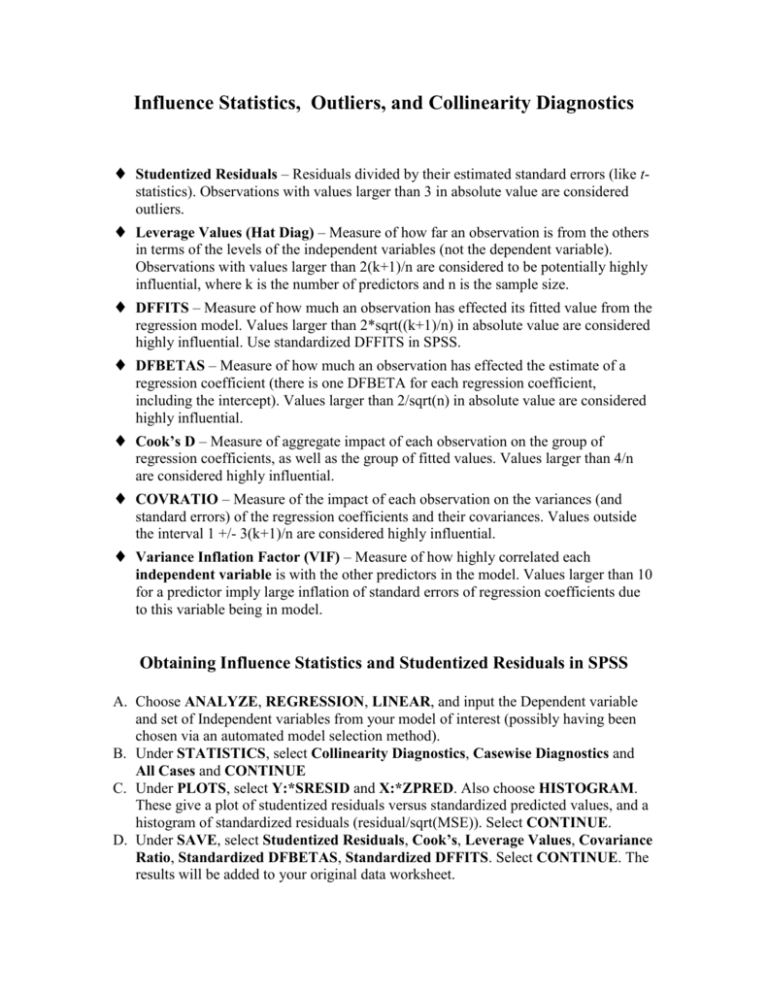
Influence Statistics, Outliers, and Collinearity Diagnostics Studentized Residuals – Residuals divided by their estimated standard errors (like tstatistics). Observations with values larger than 3 in absolute value are considered outliers. Leverage Values (Hat Diag) – Measure of how far an observation is from the others in terms of the levels of the independent variables (not the dependent variable). Observations with values larger than 2(k+1)/n are considered to be potentially highly influential, where k is the number of predictors and n is the sample size. DFFITS – Measure of how much an observation has effected its fitted value from the regression model. Values larger than 2*sqrt((k+1)/n) in absolute value are considered highly influential. Use standardized DFFITS in SPSS. DFBETAS – Measure of how much an observation has effected the estimate of a regression coefficient (there is one DFBETA for each regression coefficient, including the intercept). Values larger than 2/sqrt(n) in absolute value are considered highly influential. Cook’s D – Measure of aggregate impact of each observation on the group of regression coefficients, as well as the group of fitted values. Values larger than 4/n are considered highly influential. COVRATIO – Measure of the impact of each observation on the variances (and standard errors) of the regression coefficients and their covariances. Values outside the interval 1 +/- 3(k+1)/n are considered highly influential. Variance Inflation Factor (VIF) – Measure of how highly correlated each independent variable is with the other predictors in the model. Values larger than 10 for a predictor imply large inflation of standard errors of regression coefficients due to this variable being in model. Obtaining Influence Statistics and Studentized Residuals in SPSS A. Choose ANALYZE, REGRESSION, LINEAR, and input the Dependent variable and set of Independent variables from your model of interest (possibly having been chosen via an automated model selection method). B. Under STATISTICS, select Collinearity Diagnostics, Casewise Diagnostics and All Cases and CONTINUE C. Under PLOTS, select Y:*SRESID and X:*ZPRED. Also choose HISTOGRAM. These give a plot of studentized residuals versus standardized predicted values, and a histogram of standardized residuals (residual/sqrt(MSE)). Select CONTINUE. D. Under SAVE, select Studentized Residuals, Cook’s, Leverage Values, Covariance Ratio, Standardized DFBETAS, Standardized DFFITS. Select CONTINUE. The results will be added to your original data worksheet.

